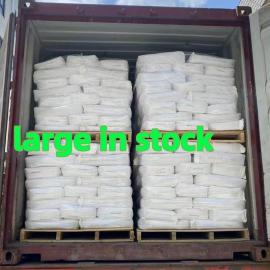-
Categories
-
Pharmaceutical Intermediates
-
Active Pharmaceutical Ingredients
-
Food Additives
- Industrial Coatings
- Agrochemicals
- Dyes and Pigments
- Surfactant
- Flavors and Fragrances
- Chemical Reagents
- Catalyst and Auxiliary
- Natural Products
- Inorganic Chemistry
-
Organic Chemistry
-
Biochemical Engineering
- Analytical Chemistry
-
Cosmetic Ingredient
- Water Treatment Chemical
-
Pharmaceutical Intermediates
Promotion
ECHEMI Mall
Wholesale
Weekly Price
Exhibition
News
-
Trade Service
News from this newspaper (Reporter Lian He) In order to further optimize China's food and agricultural product certification system and promote the implementation of Hazard Analysis and Critical Control Point (HACCP) system certification, in accordance with the "Food Safety Law of the People's Republic of China" and "Regulations on Certification and Accreditation of the People's Republic of China" China National Certification and Accreditation Administration recently organized the integration of the two certification systems of HACCP system certification for dairy production enterprises and HACCP system certification for food enterprises into the "Hazard Analysis and Critical Control Points (HACCP) System Certification Implementation Rules" (hereinafter referred to as Rules)
It is understood that the "Rules" will be implemented from July 30 this year, and the transition period will be December 31, 2022
The "Rules" clarifies the classification of food chain products/services applicable to HACCP certification, including livestock and poultry slaughtering and meat products, eggs and egg products, milk and dairy products, aquatic products, bee products, fruit and vegetable products (including edible fungi), Soybean products, other perishable plant products, quick-frozen instant food, frozen drinks, grain, starch and starch products, roasted seeds and nuts and nut products, canned food, drinking water, beverages, alcohol, wine, pastry food, instant food, candy, chocolate And candied food, edible oil and edible oil products, sugar, salt, tea and tea products, substitute tea, condiments, fermented products, cocoa and roasted coffee products, nutrition and health products, formula food for special medical purposes, feed, pets Food processing, as well as restaurant, canteen, fast food restaurant services, collective meal production, distribution (including airline catering, central kitchen, etc.
The "Rules" issued this time clarified the HACCP system certification requirements, requiring enterprises to identify and determine their mutual influence on food chain-related processes that affect food safety; establish, implement and maintain all processes and operations that have an impact on food safety, including Control procedures of outsourcing process to ensure compliance with the requirements of food safety laws and regulations in China and importing countries (regions), and identify and verify in the HACCP system; at the same time, ensure that the HACCP system is effectively implemented and food safety is effectively controlled
The "Rules" require that the top management of the enterprise should ensure the fulfillment of food safety responsibilities and establish the enterprise's food safety culture, which should at least include training employees to know the enterprise's food safety culture and form a good food safety awareness; disseminate and effectively communicate the enterprise's values, Ensure that employees at all levels actively participate in the establishment of the company's food safety culture, and obtain feedback from employees in a timely manner; evaluate food safety cultural activities and performance, and make improvements when necessary
The "Rules" make it clear that enterprises should establish, implement and maintain product identification and traceability procedures to ensure traceability to identify products and their status
The "Rules" also regulate the hygiene of food enterprises
The Rules require companies to establish, implement and maintain product contamination prevention and control procedures to control the risk of contamination and cross-contamination of food raw materials, food additives, food-related products, semi-finished products, finished products, reworked products and packaging materials, including microbial contamination, Physical pollution, chemical pollution,
The Rules make it clear that containers, tools and equipment, and vehicles for storing, transporting and loading and unloading food should be safe, harmless, clean and in good condition, fit for the intended use, and reduce the risk of food contamination; food raw materials, food additives, food-related Products, semi-finished products, finished products and packaging materials should be stored separately according to their nature, or stacked in different areas, with clear signs to prevent cross-contamination; at the same time, appropriate and controlled storage and transportation should be selected according to the characteristics of the food and hygienic needs.
"China Food News" (03 edition on August 10, 2021)
(Editor in charge: Lian He)







